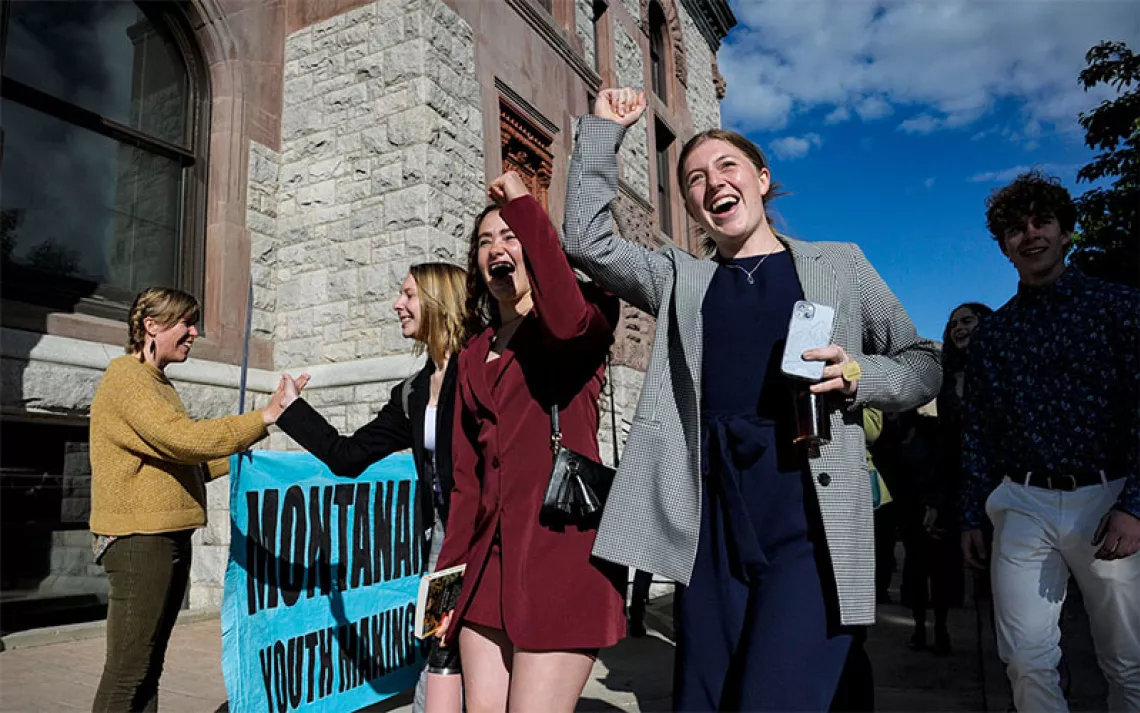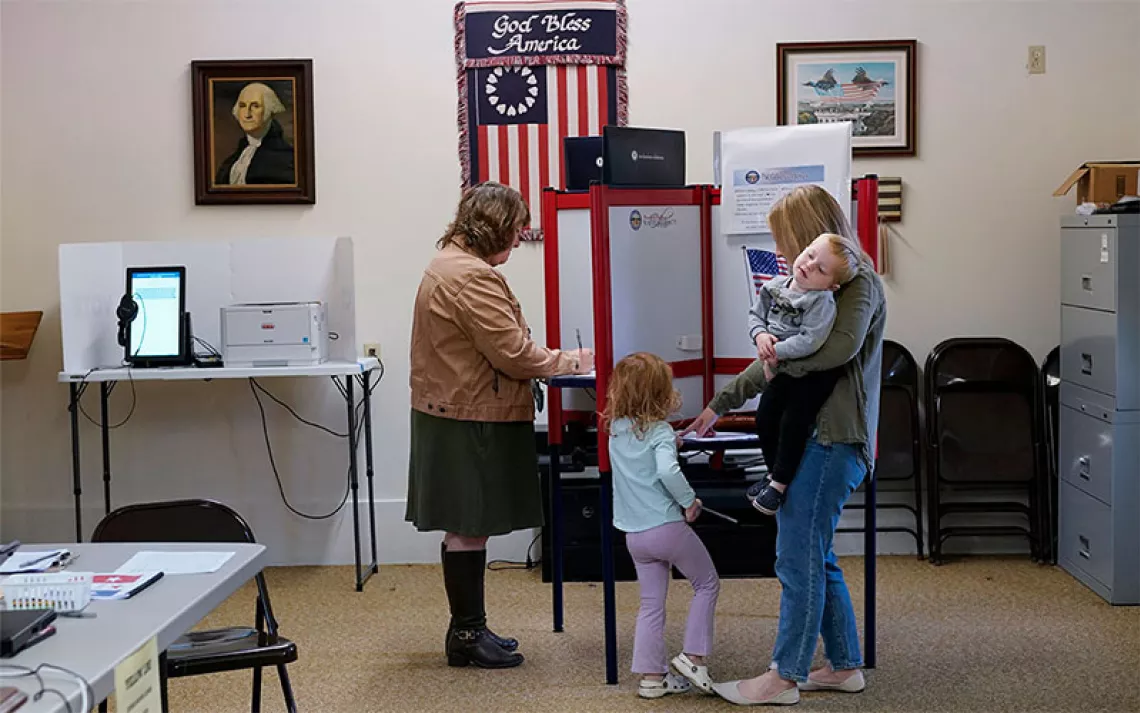Vote for Biodiversity
New research shows local ballot initiatives to preserve open land are great at preserving species, too

Photo by Cylonphoto/iStock
While all eyes are on the high-stakes presidential race this election season, new research shows that people maybe should be paying more attention to things like a 1/10th of a cent sales tax measure in Missouri, or a new 0.3 percent sales levy in Grand County, Colorado.
Both of these local ballot initiatives, along with several more across the country, will ask state, county, or municipal voters to help fund open space and other land preservation plans to protect rivers, set aside land for conservation, or maintain hiking trails.
It turns out that these initiatives do more than just protect land for hikers and bikers. According to two new studies, they also do a pretty great job at protecting biodiversity. In fact, in some ways the sites conserved by voters actually do better than land set aside by state agencies or nonprofit groups and specifically managed for conservation purposes.
“We were really surprised,” says Benjamin Crain, a lecturer at the University of Tennessee, Knoxville, who presented the research this past July at the North American Congress for Conservation Biology. “This shows that voters can have a significant impact on biodiversity, even in areas not specifically designed for conservation.”
Crain and his fellow researchers wanted to look at what happened after open spaces were acquired or protected by local ballot initiatives. The first of their two studies overlaid the locations of such sites in California with data from the California Wildlife Habitats Relationships Database, which maps out where various species are expected to live. They found that the sites corresponded to locations with high levels of amphibians, birds, reptiles, and mammals. The voter-approved locations were just as good, if not better, than wildlife reserves managed by the Nature Conservancy in other parts of California. The TNC sites all did better for rare or endangered species, but common species appeared to be doing great at the local sites.
“That was kind of an exciting thing to see,” Crain says.
Crain and his colleagues knew to take those results with a grain of salt, however. “Just because a map says something overlaps with the range of five different mammals or amphibians or whatever, does that actually mean that those mammals or amphibians are there?” Crain says. “The range could be there, but it could be a farm or a city at this point. The next step was to say, ‘Okay, let’s go to these sites and see what they actually look like on the ground.’”
That’s where the second study came into play. For this one, Crain and his research partners picked a set of sites created by local ballot initiatives—including properties from the East Bay Regional Parks-Claremont Canyon and in Marin-Pacheco Valley—and another set of areas managed by the California Department of Fish and Wildlife, including Bonny Doon Ecological Reserve in Santa Cruz and Knoxville Wildlife Area in Napa. The researchers then conducted field studies to look at the plants and trees at each type of site and found that the trees in the voter-protected areas were just as tall and had just as much canopy cover as government-established nature sites. The voter-approved sites actually performed better in terms of tree width, another sign of health. The researchers also looked for signs of human disturbances—litter, gun shells, and the like—and found no difference between the two types of sites.
“That’s not very exciting right off the page,” Crain says, “but it is very interesting because, much like the previous analysis, we could expect the DFW to be doing much better in terms of diversity and disturbances because they’re managing for those types of activities. But we didn’t find any difference in them in almost every case.” The only category in which the voter-approved protected areas performed worse was presence of invasive plants.
Crain was quick to point out that their research doesn’t suggest that the Nature Conservancy or the California DFW are doing a bad job. Instead, he says local voters are providing added and unique benefits that amplify the work of conservation organizations. “That’s great because we’re not stepping on each other’s toes,” he says. “We’re providing unique benefits.”
Although the studies focused specifically on California, the results suggest that they have nationwide benefits. Local ballot initiatives, in fact, have preserved an impressive amount of land during the past few decades. According to the LandVote Database maintained by the Trust for Public Land, voters around the United States have approved more than 1,900 of these initiatives since 1988. Collectively, such measures have set aside more than $72 billion for conservation purposes.
Conservation groups said the research helps to confirm what they already expected. “It doesn’t surprise me one bit that lands purchased with local ballot questions have conservation values,” says Michele Byers, executive director of the New Jersey Conservation Foundation. “It’s been pretty intentional. All of the properties that have been added and preserved over the past 30 years in New Jersey have got some element of plant and animal conservation value.”
That’s because many local ballot initiatives are supported or even initiated by advocacy groups, says Andrew Tuck, senior campaign manager for the Nature Conservancy. He described the open space ballot measures as meeting “a Christmas tree” of conservation priorities. “Some of them will go to parks and trails, and then some of them are specifically for wildlife habitat.”
Tuck says nearly 90 percent of the more than 200 local ballot measures that TNC has initiated over the past 20 years have passed—often with strong levels of support that transcend party labels. “We find that as partisan and divided as this country is, these ballots cross partisan lines,” Tuck says. “When they’re explained in a way so voters understand the benefits and see that the costs are reasonable, they pass overwhelmingly.”
Crain, who is currently writing up the research for publication, says he and his colleagues hope to use their results to further motivate voters and state and local agencies. Municipal or state initiatives can be at least as effective as votes on the federal level while having a direct benefit for local communities. “These votes offer a unique opportunity for people to be the change they want to see, but do it more closely to their own interests,” he says. “ This is a closer-to-home avenue for getting conservation done, which is a great way to empower the people.”
And also a great way to create some habitat for plants and wildlife along the way.
 The Magazine of The Sierra Club
The Magazine of The Sierra Club







